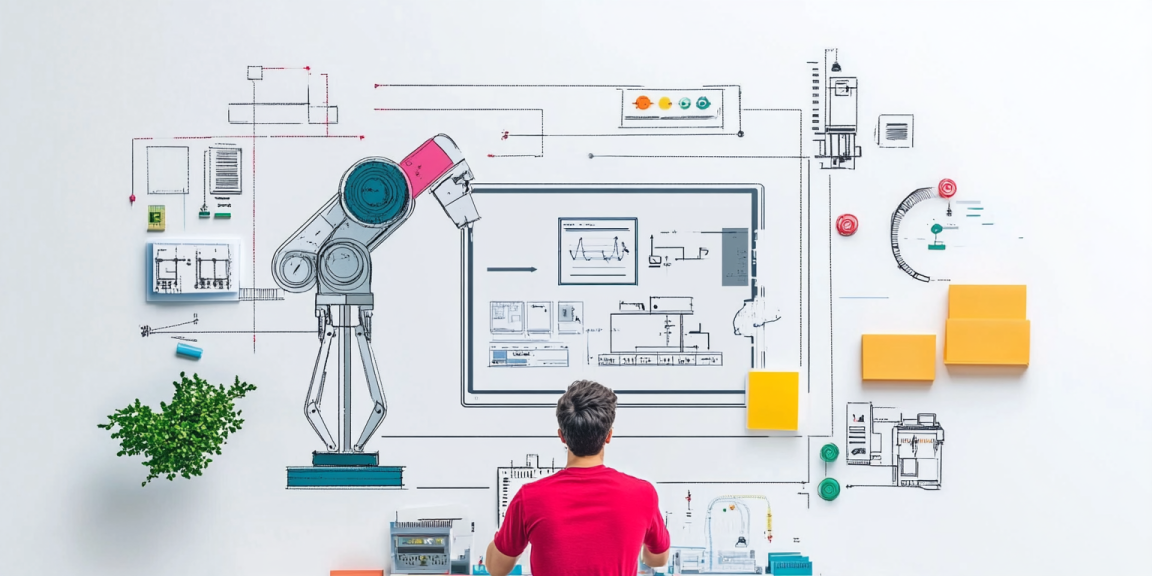The world has been witnessing a significant shift in how we handle money. Digital currencies,…

Automation has emerged as one of the most significant technological trends of the 21st century, reshaping industries, businesses, and, most importantly, the labor market. With the rise of artificial intelligence (AI), robotics, and other automated systems, automation is gradually becoming an integral part of the workforce. While automation promises increased efficiency and productivity, it also raises important questions about its impact on job security, skills requirements, and the future of work.
As automation continues to advance, businesses and workers alike must navigate a changing landscape where the roles of human labor and machine technology are increasingly intertwined. In this blog post, we will explore how automation is shaping the labor market, the types of jobs most affected by automation, the potential benefits and challenges it presents, and what the future of work might look like as automation continues to evolve.
The Rise of Automation in the Workforce
The idea of automation is not new. For centuries, humans have sought ways to streamline tasks and improve efficiency, from the first industrial revolution with mechanized factories to the introduction of the assembly line in the early 20th century. However, the speed and scope of modern automation, fueled by advancements in AI and robotics, are unparalleled. Today, industries ranging from manufacturing to healthcare, finance, retail, and even creative sectors are embracing automation to reduce costs, improve precision, and enhance customer experiences.
In the manufacturing sector, for instance, robots have replaced humans on the assembly lines for many years, performing repetitive tasks such as welding, painting, and packaging with incredible speed and accuracy. More recently, AI-powered algorithms and machines are taking on increasingly complex roles, such as data analysis, decision-making, and even customer service. This growing reliance on automation is transforming the labor market in profound ways.
The Impact of Automation on Job Market Dynamics
As automation becomes more widespread, the labor market is witnessing a shift in both the types of jobs available and the skills required to perform them. On the one hand, automation is creating new opportunities for workers in fields such as robotics, AI, machine learning, and data science. These industries are thriving, and skilled professionals are in high demand. However, on the other hand, automation is also displacing jobs that involve repetitive or routine tasks—jobs that were once primarily carried out by human workers.
Job Losses and Displacement
Certain industries and job categories are at a higher risk of automation, and as a result, workers in these fields may face displacement. According to a report by McKinsey Global Institute, around 60% of jobs in the U.S. could be automated to some degree. Jobs in manufacturing, transportation, and customer service are particularly vulnerable, as these sectors rely heavily on tasks that can be automated by machines and AI.
For example, autonomous vehicles are set to revolutionize the transportation industry, potentially eliminating millions of jobs for truck drivers, delivery drivers, and taxi services. Similarly, AI-driven customer service chatbots are already replacing call center employees and reducing the need for human interaction in certain service industries. These disruptions are especially concerning for workers whose skills are specific to these tasks and who may struggle to transition to new roles.
Job Creation in New Fields
While automation threatens to displace jobs in some sectors, it is also creating new roles in others. For every job that is lost due to automation, another one is likely to emerge in the technology sector. The demand for AI specialists, data scientists, and cybersecurity experts is growing rapidly, and these positions require highly specialized skills.
Automation also gives rise to new industries that were previously unimaginable, such as drone operators, automated logistics managers, and AI-driven healthcare professionals. These fields are not only offering high-paying jobs but are also contributing to innovation and the creation of entirely new business models. For example, healthcare has seen the development of robotic surgeries, telemedicine, and AI-powered diagnostics, all of which require skilled professionals to oversee and implement these technologies.
As the technology landscape evolves, it will be essential for workers to adapt by acquiring new skills that align with these emerging industries. Reskilling and upskilling programs will become increasingly important to help workers transition to new roles in the evolving job market.
The Changing Nature of Work
Beyond job creation and displacement, automation is fundamentally changing the nature of work itself. As automation continues to progress, many traditional job roles will shift in response to new technologies, altering how tasks are performed and who performs them.
Shifting Roles and Hybrid Jobs
Rather than completely eliminating jobs, automation is transforming many existing roles into hybrid positions that combine human expertise with automated systems. For example, instead of replacing financial analysts, AI systems are being used to assist them in analyzing data more efficiently. Similarly, in healthcare, automation is enhancing the diagnostic process, but doctors and nurses are still needed to interpret the results and make decisions based on the data.
This shift will lead to a greater emphasis on creativity, problem-solving, emotional intelligence, and other uniquely human skills that machines cannot replicate. Roles that involve high levels of decision-making, critical thinking, and personal interaction will continue to thrive, even in an increasingly automated world.
The Gig Economy and Remote Work
Automation is also contributing to the growth of the gig economy, where workers take on short-term contracts or freelance work rather than traditional full-time employment. With the rise of digital platforms that connect freelancers with clients, workers can access a broader range of opportunities that can be performed remotely. Automation tools like project management software, digital collaboration tools, and AI-powered task management are helping remote workers become more efficient, enabling them to complete tasks more quickly and accurately.
As automation makes routine tasks more efficient, workers in the gig economy may be able to focus more on creative and high-value activities, further shaping the future of work.
The Benefits and Challenges of Automation
Benefits of Automation
The potential benefits of automation are vast. In addition to increasing productivity and efficiency, automation can lead to higher-quality products and services. Machines can perform repetitive tasks more consistently and with greater precision, reducing the likelihood of human error. This can result in improved customer satisfaction, fewer defects, and faster production timelines.
Automation also opens up the possibility of cost savings for businesses, allowing them to allocate resources more effectively and focus on innovation. By automating mundane tasks, businesses can free up human workers to focus on more strategic activities, such as research and development, customer relationship management, and business strategy.
Moreover, automation can help tackle labor shortages in certain industries. For example, in agriculture, robotic systems are being used to plant, water, and harvest crops, addressing the growing demand for labor in rural areas where it is difficult to find workers.
Challenges of Automation
Despite the benefits, automation also poses significant challenges. One of the most pressing issues is the displacement of workers whose jobs are automated. As technology continues to advance, certain jobs may simply disappear, leaving many workers without viable alternatives. The transition to a more automated workforce will require significant investment in retraining programs to help workers acquire new skills and find new roles.
There is also a growing concern that the benefits of automation will be unevenly distributed. Large corporations that can afford to invest in automation technologies will be better positioned to thrive, while small businesses may struggle to keep up. This could lead to further economic inequality, as workers in lower-paying, routine jobs may be disproportionately affected by job losses.
The Future of Work in an Automated World
As automation continues to shape the labor market, the future of work will be defined by new industries, new roles, and new ways of working. While automation will undoubtedly lead to job displacement in some areas, it will also create new opportunities that require creativity, adaptability, and technical expertise. To succeed in this new landscape, workers will need to embrace lifelong learning and continuously update their skill sets to stay relevant in an ever-changing job market.
The future of work will likely be characterized by a greater emphasis on collaboration between humans and machines, where automation handles repetitive and time-consuming tasks, while human workers focus on high-level decision-making, creativity, and interpersonal interactions. This shift will require businesses to adopt more flexible and inclusive approaches to workforce management, creating environments that foster innovation and support workers through periods of transition.
Conclusion
In conclusion, automation is transforming the labor market in ways that present both opportunities and challenges. While it is true that some jobs will be displaced, the rise of automation also brings about the creation of new roles and industries that require specialized skills. To navigate this changing landscape, workers and businesses alike must embrace lifelong learning, adaptability, and a commitment to fostering a workforce that can thrive in an automated world. As automation continues to evolve, the future of work will undoubtedly be shaped by the collaborative relationship between humans and machines, offering exciting prospects for those who are prepared to meet the challenges ahead.



